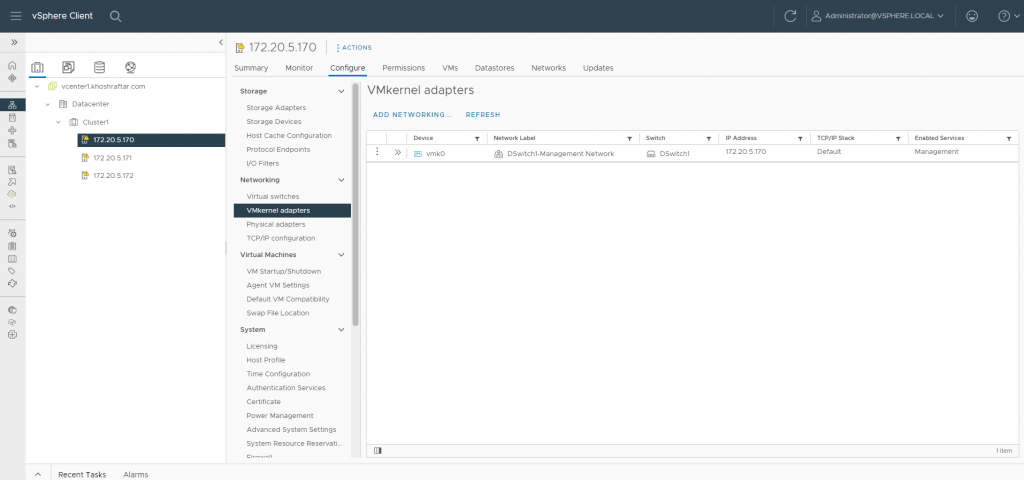Hi, Today i decided enable vSAN 7.0 File Service.
vSAN file service allows a vSphere admin to provision a file share from their vSAN cluster. The file share can be accessed using NFS or SMB.
1- Click on your Cluster –> Configure TAB –> vSAN –> Services –> File service –> Enable

2- Checklist
The following information is needed to configure file service.
- Static IP address, subnet masks and gateway for file servers
- DNS name for each IP address or allow the system to do a reverse DNS lookup.
For SMB share and NFS share with Kerberos Security, the following information is needed.
- AD domain, organizational unit (optional), and a user account with sufficient delegated permissions.

I configure DNS name for each IP address

3- You can download manually or automatically File service agent, i downlload it and Manually import it. Click Browse

Select your files and Next.

4- Enter your Domain informations.

5- Enter your Networking information.

It is important configure Security setting before add it to File Service.
Go to Ntework Tab –> Select your port group or create new port group –> Advanced –> Custumize default polices configuration


Promiscuous mode and Forged transmits –> Accept

6- Choose your distributed port group name and location

7- Enter your ips and DNS names

8- Click on Finish button

Finish 🙂






